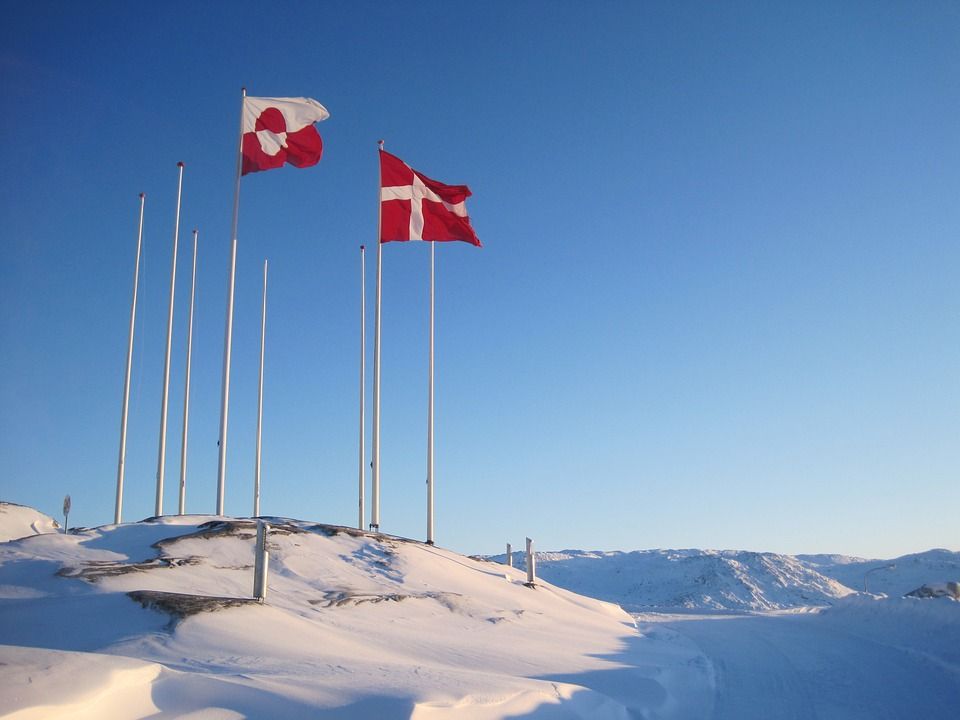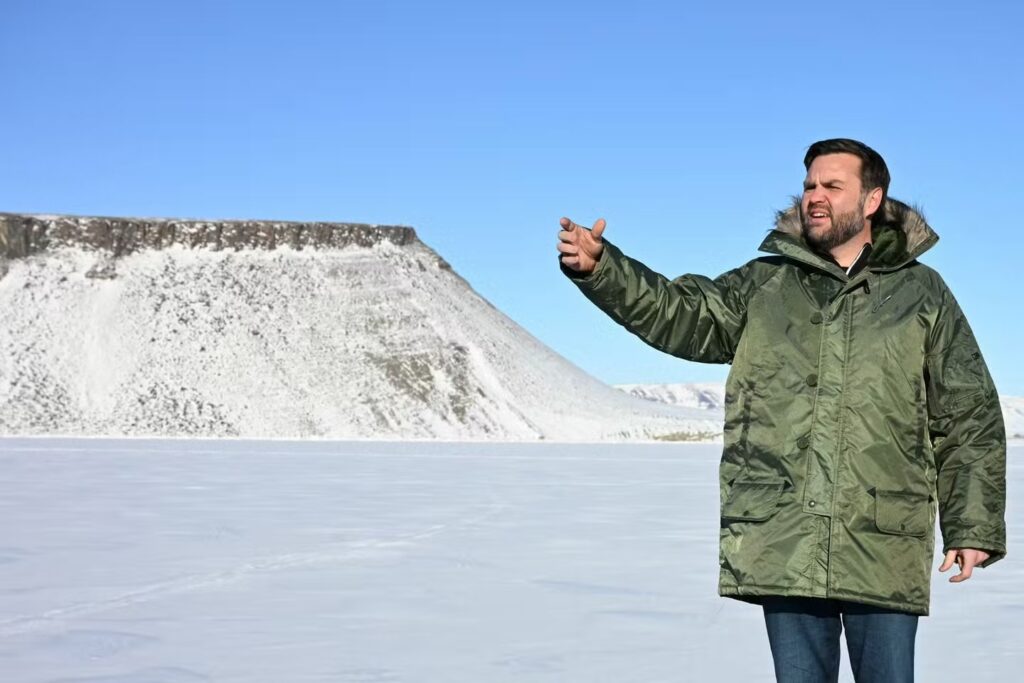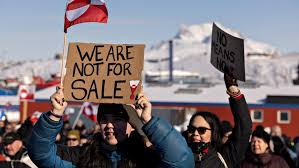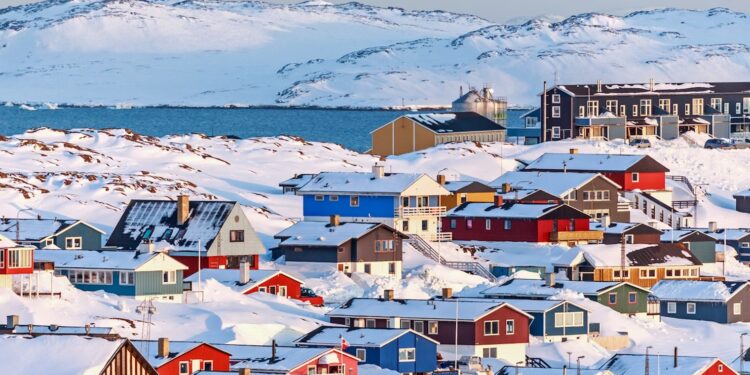Greenland, the world’s largest island, sits like a frozen crown between the North Atlantic and the Arctic Ocean. But beneath its icebound surface lies a contested legacy of colonialism, strategic ambition, and natural wealth. Today, Greenland is no longer just a place on the map — it is a geopolitical stage, a climate bellwether, and a resource frontier. From Norse settlements to Donald Trump’s infamous bid to buy it, Greenland’s story is one of quiet resilience and growing global relevance.
An island of legends and long memory
Greenland’s earliest human history stretches back over 4,500 years, with successive waves of Inuit migration from the Canadian Arctic. The present Inuit population — mainly Kalaallit — are descendants of the Thule people, who established hunting communities across Greenland’s harsh interior and coasts by the 13th century.
The island entered European consciousness with the arrival of Erik the Red, a Norse outlaw from Iceland who founded a settlement in southern Greenland around 985 AD. His arrival, tinged with myth, gave Greenland its name — allegedly chosen to entice other settlers with promises of fertility, despite its largely ice-covered landscape.

The Norse colonies lasted for several centuries, trading with Europe and navigating the dangerous North Atlantic. But they eventually disappeared — likely due to climate cooling, soil degradation, and the increasing difficulty of trade and survival. The Inuit communities, better adapted to the environment, endured.
Greenland remained relatively isolated until the early modern period, when Denmark–Norway reasserted control in the 18th century, formalising colonial governance over the indigenous population and initiating religious and economic missions. This legacy would shape Greenland’s modern identity — torn between Danish paternalism and the struggle for autonomy.
A cold war outpost with hot strategic value
During the Second World War, Greenland found itself in a new role: a strategic Arctic outpost. With Denmark under Nazi occupation, the US and Canada jointly managed Greenland under a protective agreement. When the Cold War began, Greenland’s value only increased.
In 1951, Denmark and the US signed a defence treaty allowing the US to maintain military bases, including Thule Air Base in the northwest. Still active today, Thule remains vital to American missile defence and early warning systems — a reminder that Greenland sits astride key air and satellite routes between North America, Europe and Asia.
The strategic weight of Greenland was made stark again in 2019, when then-President Donald Trump made headlines by suggesting the US buy the island from Denmark. While many dismissed it as a diplomatic gaffe, it underscored a deeper truth: Greenland’s position, resources and political trajectory are increasingly central to global power dynamics.

Denmark’s claim and Greenland’s autonomy
Greenland is part of the Kingdom of Denmark, but its relationship with Copenhagen is complex and evolving. Home to just 57,000 people — most of them Inuit — Greenland has sought greater control over its affairs for decades.
In 1979, Denmark granted Greenland home rule, followed by self-government in 2009. Today, Greenland controls its domestic matters, while Denmark retains authority over foreign policy, defence and monetary issues. Crucially, Greenland also receives an annual block grant of roughly 3.9 billion DKK from Denmark — around a third of its GDP.
While some in Greenland seek full independence, economic dependence on Denmark remains a critical obstacle. The island’s economy relies heavily on fishing (especially shrimp and halibut), public administration, and Danish subsidies. Tourism is growing, but infrastructure challenges remain. The dream of sovereignty is tempered by financial realities.
Mineral wealth beneath the ice
The key to Greenland’s economic future may lie beneath its melting ice. As climate change transforms the Arctic, exposing terrain previously inaccessible, Greenland’s vast mineral potential has come into sharper focus.
The island holds deposits of rare earth elements, uranium, zinc, gold, and iron ore — resources crucial for green technologies and global supply chains. Rare earths, in particular, are vital for batteries, wind turbines, and electronics — and their global supply is dominated by China.
This has made Greenland a focus of interest for mining firms and strategic planners. A proposed rare earth mine at Kvanefjeld, led by an Australian-Chinese consortium, became a lightning rod for political debate in Greenland in 2021. The left-leaning Inuit Ataqatigiit party swept to power on an anti-uranium, anti-mining platform, reflecting deep public concern over environmental risks and foreign control.
The Kvanefjeld project was ultimately shelved, but others remain on the table. Greenlandic leaders now face a dilemma: how to unlock economic growth without compromising ecological integrity or repeating colonial patterns of exploitation.

The US returns — with more than military interest
While American radar stations and defence systems have long dotted Greenland’s landscape, the US has recently renewed its interest in more civilian terms. In 2020, the Trump administration opened a consulate in Nuuk for the first time since the 1950s and announced $12 million in development aid to Greenland — funding for sustainable mining, tourism and education.
While modest, the move signalled a clear intent to strengthen US-Greenland ties and counter growing Chinese influence in the Arctic. For Washington, Greenland is not just about defence — it’s a node in a larger contest over Arctic governance, critical resources, and climate frontiers.
Since then, successive US administrations have continued low-key diplomatic engagement, investing in infrastructure and energy partnerships, often in consultation with Copenhagen. Greenland’s leaders, meanwhile, have used the interest to assert their own diplomatic agency — forging bilateral relationships while managing the expectations of their Danish partner.

Climate change: curse and opportunity
Greenland is one of the fastest-warming regions on Earth. Its ice sheet — covering 80% of the island — is melting at an alarming rate. Scientists estimate that Greenland has lost over 4 trillion tonnes of ice since 2002, contributing significantly to global sea level rise.
The environmental costs are staggering. Melting ice disrupts ecosystems, threatens traditional ways of life for Inuit hunters, and alters ocean circulation patterns. At the same time, it exposes land and sea routes that were once inaccessible — opening new shipping lanes and revealing untapped mineral reserves.
This dual reality — environmental fragility and economic opportunity — defines modern Greenland. Leaders must navigate the tensions between sustainability and growth, tradition and innovation. As global temperatures rise, Greenland will increasingly become both a victim and a vector of climate change.
Inuit culture and the fight for preservation
Despite centuries of colonisation and marginalisation, Greenland’s indigenous culture remains vibrant. The Greenlandic language — Kalaallisut — is widely spoken and an official language alongside Danish. Traditional practices such as kayaking, seal hunting and drum dancing continue to play a role in daily life and identity.
Yet pressures abound. Urbanisation, climate change, and generational divides threaten the continuity of cultural knowledge. Danish remains the language of higher education and many government functions. Mental health and suicide rates — especially among young Greenlanders — remain deeply concerning, reflecting the psychological toll of rapid change and cultural dislocation.
There is growing momentum for cultural reclamation and self-determination. The Greenlandic education system increasingly incorporates Inuit history and values. Artists, musicians and filmmakers are gaining international recognition. Political leaders are promoting a uniquely Greenlandic path — neither a copy of Denmark nor a mirror of western models.

What does the future hold?
Greenland’s future lies at the intersection of history, geology and geopolitics. Its potential is immense — but so are its challenges. Full independence remains a distant dream unless new economic engines can replace Danish support. The tension between mineral exploitation and environmental stewardship is unresolved.
The world will continue to watch — and court — Greenland. China, for example, has invested in Arctic science and sought mining access, though efforts have been met with resistance. The EU has classified Greenland as a strategic partner for rare earth cooperation. NATO has expanded Arctic exercises and contingency planning.
But the most important decisions will not be made in Washington, Beijing or Copenhagen. They will be made in Nuuk — Greenland’s capital and political heart. Here, policymakers must balance the needs of their people with the ambitions of outsiders. They must define what sovereignty means in a warming world, and how to honour the inheritance of ancestors while embracing the possibilities of tomorrow.
Greenland is no longer a blank spot on the map
For centuries, Greenland has been portrayed as distant and inert — an empty frontier. But that illusion has melted, like its ice. What emerges is a place of deep memory and living presence, a land where climate, culture and politics collide.
The story of Greenland is not just about resources or power — it’s about resilience. It’s about the right to choose one’s future in the face of global pressures. And in that, perhaps, Greenland offers more than minerals or military value. It offers a model for what sovereignty might mean in the 21st century: local, enduring, and not for sale.
REFH – Newshub, 25 July 2025



Recent Comments